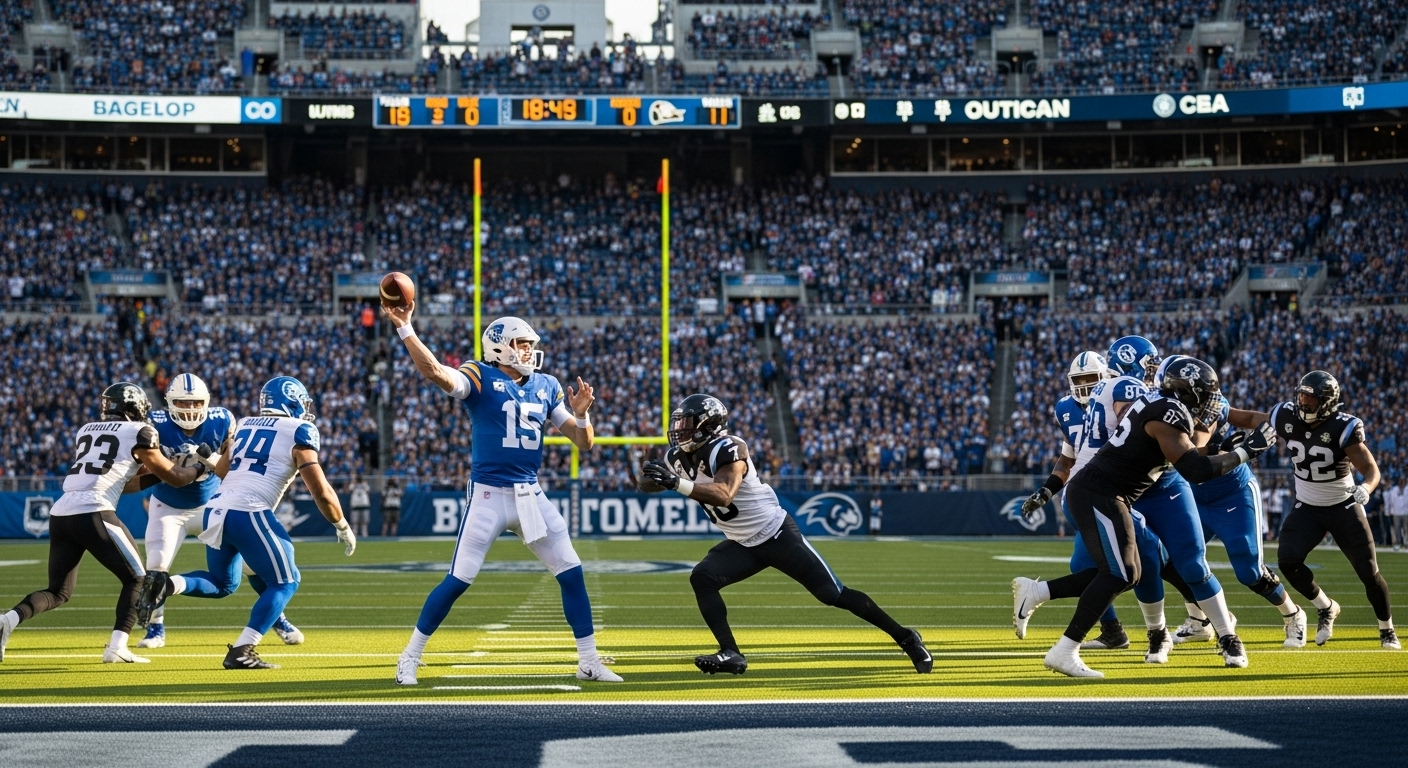Introduction
The National Football League is celebrated for dazzling quarterbacks, explosive receivers, and highlight-reel runs, but behind every legendary offense is a defense that can define eras. The great defensive players of NFL history not only stopped opponents but also reshaped how the game was played. They intimidated, inspired, and often carried entire franchises with their dominance. Defense wins championships, and the careers of certain players prove this maxim true time and again.
This blog explores the top defensive players in NFL history, tracing their impact across decades, examining the traits that set them apart, and celebrating how they left an indelible mark on the league. From relentless pass rushers to lockdown cornerbacks, these legends represent the gold standard of defensive excellence.
The Essence of Defense in the NFL
To appreciate the significance of great defensive players, one must first understand the role of defense in football. Unlike offense, which controls the tempo, defense reacts and adapts, relying on instincts, discipline, and raw athleticism. A single defensive play—an interception returned for a touchdown, a goal-line stand, or a strip sack—can change the outcome of a game.
Great defensive players combine intelligence with ferocity. They study opponents’ tendencies, anticipate plays, and execute with precision. More than that, they inspire teammates and strike fear into opponents. Defensive legends are remembered not only for statistics but also for their aura, their leadership, and their ability to dominate in the biggest moments.
The Pioneers of Defense
In the early decades of the NFL, defense was raw and brutal, often defined by toughness rather than specialization. Yet even in those years, certain players stood out. Names like Bronko Nagurski, who played both offense and defense in the 1930s, and Bill George, credited as the first true middle linebacker in the 1950s, laid the groundwork for modern defensive strategies.
But it was players like Deacon Jones who brought artistry to defense. Jones, a defensive end for the Los Angeles Rams in the 1960s and 70s, is often credited with coining the term “sack.” His speed and technique revolutionized pass rushing, making him one of the first defensive superstars of the modern era. Though sacks were not officially recorded until later, estimates suggest Jones tallied over 170 in his career, an astonishing number for his time.
Linebacker Legends
No discussion of defensive greats is complete without honoring the linebackers who became the heartbeat of their teams. Linebackers embody a blend of speed, strength, and football IQ, often tasked with both defending the run and covering passes.
Dick Butkus is perhaps the most feared linebacker in NFL history. Playing for the Chicago Bears in the 1960s and 70s, Butkus became synonymous with toughness and intimidation. His bone-crushing hits and relentless pursuit of the ball made him a nightmare for opponents. Beyond the physical dominance, Butkus was a leader who inspired respect and fear across the league.
Ray Lewis of the Baltimore Ravens carried that torch into the modern era. As the emotional leader of one of the greatest defenses ever assembled, Lewis combined ferocity with intelligence. He was a two-time Defensive Player of the Year and a Super Bowl MVP, known for his fiery speeches and ability to elevate teammates. His presence defined the Ravens’ identity for more than a decade.
Lawrence Taylor, often simply called LT, transcended the linebacker position. Playing for the New York Giants in the 1980s and early 90s, Taylor redefined what a pass-rushing linebacker could be. His speed off the edge was unmatched, forcing offenses to change their blocking schemes and even influencing how coaches designed plays. Taylor won two Super Bowls, three Defensive Player of the Year awards, and remains the only defensive player to win league MVP in the modern era. Many experts consider him the greatest defensive player of all time.
Dominant Defensive Linemen
The defensive line is where battles in the trenches decide games, and the NFL has seen giants of the position who could disrupt plays before they even developed.
Reggie White, nicknamed the “Minister of Defense,” was a once-in-a-lifetime defensive end. Over his career with the Philadelphia Eagles and Green Bay Packers, White recorded 198 sacks, a record at the time of his retirement. His combination of strength and finesse moves, particularly his trademark “hump move,” made him unstoppable. White was a cornerstone of the Packers’ Super Bowl XXXI victory and remains a model for defensive linemen today.
Mean Joe Greene of the Pittsburgh Steelers embodied dominance in the 1970s. As the anchor of the legendary “Steel Curtain” defense, Greene was not only a physical force but also a leader who brought intensity and discipline. His ability to control the line of scrimmage was central to the Steelers’ four Super Bowl championships during the decade.
Aaron Donald represents the modern evolution of defensive line play. Despite being undersized compared to traditional defensive tackles, Donald has redefined the position with his quickness, technique, and relentless motor. A multiple-time Defensive Player of the Year with the Los Angeles Rams, Donald has consistently drawn double and triple teams yet still produces game-changing plays. His Super Bowl LVI performance cemented his legacy as one of the greatest defensive linemen of all time.
Secondary Superstars
While linemen and linebackers dominate the front seven, the secondary has its own legends who excelled in coverage and ball-hawking. Great defensive backs can shut down elite receivers and turn interceptions into game-winning moments.
Deion Sanders, known as “Prime Time,” is arguably the most famous cornerback in NFL history. With unmatched speed and confidence, Sanders shut down one side of the field, forcing quarterbacks to avoid him. His ability to turn interceptions into electrifying returns made him a game-changer. Beyond defense, Sanders contributed on special teams and occasionally offense, showcasing his all-around athleticism.
Rod Woodson was another versatile defensive back who excelled at both cornerback and safety. Playing primarily for the Pittsburgh Steelers, Woodson recorded 71 career interceptions and was known for his ability to read quarterbacks and close on the ball with lightning speed. He remains one of the most respected defensive backs in league history.
Ronnie Lott redefined toughness at the safety position. Playing for the San Francisco 49ers during their dynasty years, Lott was feared for his punishing hits and unmatched instincts. A four-time Super Bowl champion, Lott was both a leader on the field and a symbol of determination. Famously, he once had part of a finger amputated to avoid missing playing time, cementing his reputation as one of the toughest players in NFL history.
Ed Reed of the Baltimore Ravens brought ball-hawking to an art form. Known for his uncanny ability to read offenses and anticipate plays, Reed is the NFL’s all-time leader in interception return yards. Quarterbacks dreaded throwing near him, and his ability to turn defense into offense made him one of the most impactful safeties ever.
Defensive Dynasties and Team Identities
The greatness of individual players often shines brightest when paired with legendary defensive units. The Chicago Bears of 1985, led by Mike Singletary and anchored by Richard Dent, produced one of the most dominant defenses ever, allowing just 12.4 points per game and powering the team to a Super Bowl victory.
The Baltimore Ravens’ defense in 2000, featuring Ray Lewis, Rod Woodson, and a fearsome front seven, set records by allowing the fewest points in a 16-game season. Similarly, the Pittsburgh Steelers of the 1970s, with the Steel Curtain, established an era of dominance built on defense.
These teams remind us that while offense may sell tickets, defense builds dynasties. The top defensive players were often the backbone of championship-winning teams, proving their irreplaceable value.
The Evolution of Defensive Roles
Defensive greatness has evolved as the NFL has shifted into a more pass-heavy league. Earlier eras emphasized run-stopping and physical intimidation, while modern defenses prioritize speed, coverage, and versatility. Today’s defensive stars must adapt to complex offensive schemes, mobile quarterbacks, and high-octane passing attacks.
Players like Aaron Donald, Jalen Ramsey, and T.J. Watt reflect this evolution. Their ability to disrupt plays in multiple ways embodies the modern defensive mindset. The adaptability of great defenders across eras is what cements their status in history.
Measuring Greatness in Defense
Statistics tell only part of the story when evaluating the best defensive players. Sacks, interceptions, tackles, and forced fumbles matter, but the true measure is impact. Did opponents fear throwing to one side of the field? Did offenses game-plan around a single defender? Did a player elevate his team in the biggest moments?
The legends of NFL defense all share one trait: they changed games by their very presence. Whether through a timely interception, a strip sack in the fourth quarter, or relentless pursuit of the ball, they left their mark in ways numbers alone cannot capture.
Conclusion
The history of the NFL is filled with unforgettable offensive performances, but the legacy of the league is equally defined by the defenders who stood tall against them. From Lawrence Taylor’s unmatched dominance to Reggie White’s relentless pursuit, from Deion Sanders’ shutdown coverage to Ray Lewis’s fiery leadership, the top defensive players in NFL history embody what it means to be game-changers.
Defense is about pride, resilience, and determination. These players set the standard for generations to follow, reminding us that while touchdowns may light up the scoreboard, it is often defense that writes the history of champions. Their names endure not only because of their statistics but because they redefined what it meant to play defense in the NFL.

